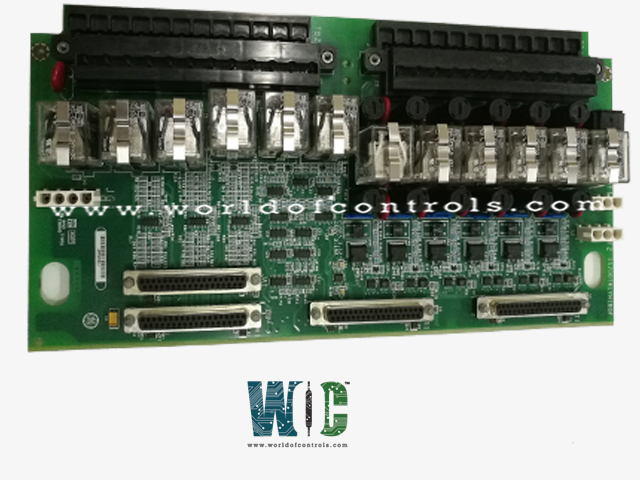
World Of Controls understands the criticality of your requirement and works towards reducing the lead time as much as possible.
IS200TRLYH1BGE - Relay Output Board is available in stock which ships the same day.
IS200TRLYH1BGE - Relay Output Board comes in UNUSED as well as REBUILT condition.
To avail our best deals for IS200TRLYH1BGE - Relay Output Board, contact us and we will get back to you within 24 hours.
Part No.: IS200TRLYH1BGE
Manufacturer: General Electric
Country of Manufacture: United States of America (USA)
Max response time on: 25 ms typical
Max response time off: 25 ms typical
Contact material: Silver cad-oxide
Temperature Operating: -30 to 65oC
Product Type: Relay Output Board
Availability: In Stock
Series: Mark VIe
IS200TRLYH1BGE is a Relay Output Board developed by GE. It is a part of the Mark VIe control system. The terminal board is designed to accommodate 12 plug-in magnetic relays and offers various configuration options. The first six relay circuits on the board can be configured using jumpers. Users have the option to set them for dry contacts, Form-C contact outputs, or to drive external solenoids.
The WOC team is always available to help you with your Mark VIe requirements. For more information, please contact WOC.
What is IS200TRLYH1BGE?
It is a Relay Output Board developed by GE under the Mark VIe series.
What adjustments are available on the board?
The terminal board offers adjustments primarily through jumpers and fuses.
How are jumpers utilized on the board?
Jumpers, labeled JP1 through JP12, are used to configure specific relay circuits, particularly for contact voltage sensing. When contact voltage sensing is required, jumpers should be inserted for the selected relays accordingly.
What is the purpose of fuses on the board?
Fuses, labeled FU1 through FU12, provide protection and distribution of power to the relay circuits. For relays 1 to 6, where power supply is necessary, two fuses should be placed in each power circuit supplying these relays.
How do these adjustments contribute to system operation?
Proper adjustment of jumpers and the installation of fuses ensure the reliable and safe operation of the terminal board within the system. These adjustments allow users to customize the board configuration based on specific operational requirements, enhancing overall functionality and performance.